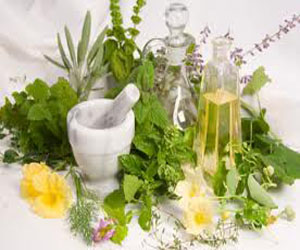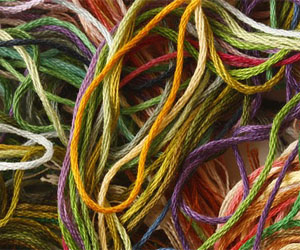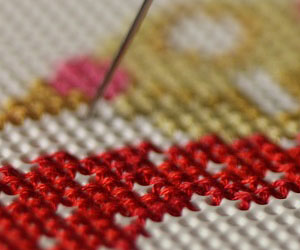


A Journey Towards Health And Well-Being

In today's world, there is a growing awareness of the potential risks associated with synthetic chemicals and artificial products, prompting individuals to seek safer alternatives. This shift towards safer options spans various aspects of life, from food and skincare to cleaning products and more. In this article, we'll explore the importance of opting for safer alternatives and how they contribute to overall health and well-being.
Understanding The Risks: The first step in seeking safer alternatives is to understand the potential risks associated with conventional, chemical-laden products. Many personal care items and cleaning supplies contain harsh chemicals that can be absorbed through the skin or inhaled, potentially leading to health issues over time.
Safer Skincare: Personal care products, such as cosmetics and skincare items, are notorious for containing synthetic chemicals. Safer alternatives often come in the form of natural or organic products. These are made with ingredients sourced from nature, reducing the risk of skin irritation, allergies, or exposure to harmful substances.
Chemical-Free Cleaning: Conventional household cleaning products often contain a mix of harsh chemicals, many of which can be harmful to both human health and the environment. Safer alternatives include natural cleaning products, such as vinegar, baking soda, and plant-based cleaners, which effectively clean without the toxic residue.
Nutrition And Food Choices: Safer alternatives extend to our diet. Organic produce, for instance, reduces exposure to pesticides and synthetic additives. Opting for whole foods over processed ones is another way to embrace a healthier approach to nutrition.
Reducing Plastic: Plastic pollution is a significant environmental issue, and it can also have adverse health effects due to the presence of microplastics in our food and water. Safer alternatives include using reusable containers and reducing plastic usage to minimize exposure.
Natural Medicine: Traditional and alternative medicine systems, like Ayurveda and Traditional Chinese Medicine, often provide safer alternatives to pharmaceutical drugs. These natural remedies focus on holistic healing and have fewer side effects.
Eco-Friendly Choices: Safer alternatives often align with eco-conscious choices. Reusable items, like cloth shopping bags and stainless steel straws, not only reduce waste but also limit exposure to potentially harmful chemicals found in disposable plastics.
Mental Well-Being: Seeking safer alternatives is not limited to physical health. Mindfulness practices, meditation, and holistic therapies provide safer alternatives to stress management and mental well-being without the potential side effects of prescription medications.
Holistic Approach: Safer alternatives often embody a holistic approach to life, focusing on the interconnectedness of physical, mental, and environmental well-being. This approach promotes overall health and a sense of balance.
Empowerment: Choosing safer alternatives empowers individuals to take control of their health and well-being. It allows them to make informed choices that prioritize safety and sustainability, contributing to a higher quality of life.
The shift towards safer alternatives is not merely a trend but a conscious choice to prioritize health and well-being. By opting for natural, organic, and eco-friendly options, individuals can reduce their exposure to harmful substances and reduce their impact on the environment. Safer alternatives offer a path to a healthier and more sustainable way of living, where personal well-being and the well-being of the planet go hand in hand. So, why not take the first step in embracing these safer alternatives and embark on a journey towards a healthier and more balanced life?
Exploring Candle Crafting Techniques
 Embedding: Embedding involves placing decorative objects (like dried flowers, seashells, or small figurines) within the candle as it cools and hardens. The objects are preserved within the candle, providing a unique, artistic touch.
Embedding: Embedding involves placing decorative objects (like dried flowers, seashells, or small figurines) within the candle as it cools and hardens. The objects are preserved within the candle, providing a unique, artistic touch.
Marbling And Swirling:
Marbled Candles: Achieve marbling effects by mixing various colored wax and gently swirling them together before pouring into a mold. The result is a candle with beautiful, intertwined patterns.
Swirled Candles: Create captivating swirl patterns by pouring different colored wax into a mold, then using a tool to create swirling designs before the wax solidifies.
Carving And Sculpting:
Carved Candles: Hand-carved candles are true works of art. After the candle has cooled and solidified, use carving tools to create intricate designs and patterns on the candle's surface.
Sculpted Candles: Sculpted candles involve shaping the wax while it's still soft and malleable. This technique allows for the creation of 3D designs and intricate shapes.
Aromatherapy And Scented Candles:
Aromatherapy Candles: Combine the art of candle making with the therapeutic benefits of aromatherapy. Infuse your candles with essential oils, such as lavender or eucalyptus, to create scented candles that promote relaxation and well-being.
Wax Embeds And Inclusions:
Wax Embeds: Add additional wax elements within your candles to create textural interest. These can be in the form of small wax chunks, flakes, or even finely grated wax that creates unique patterns within the candle.
Inclusions: Inclusions refer to adding non-wax elements like herbs, spices, or glitter to your candles. These inclusions can add a visual or aromatic dimension to your candles, making them truly one-of-a-kind.
Gel Candles: Gel candles are made by using a clear, gel-like wax that allows for embedding decorative elements.






The Fascinating World Of Ancient Brewing
 Brewing As A Cultural Ritual: In ancient societies, brewing held a special place in both religious and social contexts. Beer was often associated with various deities and played a vital role in religious rituals. In Egypt, for instance, beer was a part of offerings to the gods, while in Sumeria, it was seen as a gift from the goddess Ninkasi, who was not only the goddess of beer but also a symbol of the Sumerian way of life.
Brewing As A Cultural Ritual: In ancient societies, brewing held a special place in both religious and social contexts. Beer was often associated with various deities and played a vital role in religious rituals. In Egypt, for instance, beer was a part of offerings to the gods, while in Sumeria, it was seen as a gift from the goddess Ninkasi, who was not only the goddess of beer but also a symbol of the Sumerian way of life.
The Influence Of Ancient Brewing: The techniques developed by ancient civilizations have had a profound influence on brewing throughout history. The knowledge of fermenting grains, along with the discovery of hops in medieval Europe, led to the development of beer as we know it today. Ancient brewing traditions continue to inspire modern craft brewers who look to revive old recipes and ingredients to create unique and historically accurate brews.
Brewing In the Modern Age: Despite the vast differences between ancient brewing techniques and modern practices, there are some striking similarities. Both ancient and contemporary brewers share a fundamental understanding of the transformative power of yeast. Yeast, the microorganism responsible for fermentation, was a key component in ancient brewing and continues to be the cornerstone of brewing today.
Moreover, the reverence for beer as a social and cultural drink has endured through the ages. Just as in ancient times, beer today continues to bring people together, whether it's enjoying a pint at a local pub or brewing with friends in the comfort of one's home.
A Green Revolution In Beauty
 Clean Beauty: One of the core principles of plant-based cosmetics is their commitment to clean beauty. They avoid harmful chemicals, synthetic fragrances, and toxic additives found in traditional cosmetics. This reduces the risk of skin sensitivities, allergies, and long-term health issues.
Clean Beauty: One of the core principles of plant-based cosmetics is their commitment to clean beauty. They avoid harmful chemicals, synthetic fragrances, and toxic additives found in traditional cosmetics. This reduces the risk of skin sensitivities, allergies, and long-term health issues.
Sustainability In Practice: Many plant-based cosmetics brands prioritize sustainable practices. They responsibly source their ingredients, employ eco-friendly manufacturing methods, and package their products in recyclable or biodegradable materials. This substantially reduces their ecological footprint.
Cruelty-Free Commitment: A significant portion of plant-based cosmetics is cruelty-free, meaning they do not engage in animal testing. This aligns with the principles of compassionate consumerism and ethical treatment of animals.
Transparency And Accountability: Transparency is a hallmark of plant-based cosmetics brands. They provide clear and detailed information about their ingredients, sourcing, and production processes. This empowers consumers to make informed choices about the products they apply to their skin.
Broad Range Of Products: Plant-based cosmetics extend beyond skincare to include makeup products like foundations, lipsticks, and eyeshadows. These clean cosmetics provide safe and effective alternatives for enhancing beauty without compromise.
Nurturing Nature And Your Garden
 The Essence Of Sustainability In Herb Cultivation
The Essence Of Sustainability In Herb Cultivation
Sustainable herb cultivation involves growing herbs in a manner that minimizes environmental impact, conserves resources, and promotes long-term garden health. This approach takes into consideration the entire lifecycle of the garden, from planting and maintenance to harvest and beyond.
Sustainable Herb Cultivation Practices
Organic Gardening: The foundation of sustainability in herb cultivation is organic gardening. Avoid synthetic pesticides and fertilizers, opting instead for natural and organic alternatives. This practice ensures that your herbs are free from harmful chemicals.
Water Conservation: Use water wisely by installing efficient irrigation systems like drip hoses or soaker hoses. Collect rainwater for irrigation to reduce dependence on municipal water supplies.
Composting: Create your compost heap to recycle kitchen scraps and garden waste. Compost enriches the soil, reduces the need for synthetic fertilizers, and minimizes landfill waste.
The Artistry In Every Stitch
 Quilting: Quilting is a technique that marries practicality and artistry. Quilts are made by stitching layers of fabric together, often with intricate patterns. Traditional quilt designs tell stories and are passed down through generations. Quilting stitches can be simple or highly detailed, adding depth and warmth to these cherished heirlooms.
Quilting: Quilting is a technique that marries practicality and artistry. Quilts are made by stitching layers of fabric together, often with intricate patterns. Traditional quilt designs tell stories and are passed down through generations. Quilting stitches can be simple or highly detailed, adding depth and warmth to these cherished heirlooms.
Cross-Stitch: Cross-stitch is known for its precise, grid-based patterns created by "X" stitches. It is a popular choice for decorative items like samplers and personalized gifts. The process is meditative, requiring attention to detail and precision in every stitch.
Appliqué: Appliqué is the art of attaching smaller pieces of fabric onto a larger base to create images, patterns, or designs. This technique can be found in quilting, clothing, and decorative textiles. Appliqué often involves intricate stitching to secure the fabric pieces and add embellishments.
Thread Painting: Thread painting is a technique that mimics the strokes of a painter's brush with colored threads. Artists use varying thread densities and colors to create detailed images on fabric. The result is a stunning visual masterpiece.
Modern Innovation: Threadwork techniques have also embraced modern technology. Computerized embroidery machines allow for intricate and repetitive designs with precision and speed. Additionally, contemporary artists often combine traditional techniques with digital art, creating a fusion of the old and new.
Cultural Significance: Many threadwork techniques carry cultural and historical significance. The choice of colors, patterns, and motifs can reflect the heritage and storytelling of a particular community. These crafts also serve as a way to preserve and pass down traditions through the generations.